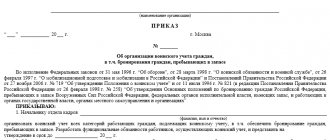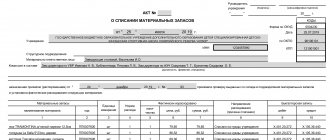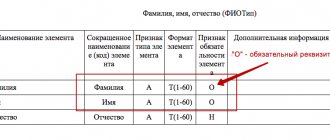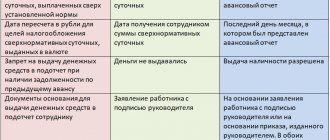New right
If an organization has several separate divisions on one municipal territory or its location with separate divisions together on this territory, starting from 2021, you can pay personal income tax and submit reports on it in one of 2 ways:
- at the location of one of these sections;
- at the location of the parent organization.
This is regulated by the new paragraph of paragraph 7 of Art. 226 of the Tax Code of the Russian Federation from January 1, 2020 (introduced by Law No. 325-FZ of September 29, 2019).
The tax agent himself chooses a separate office or head office (this is his right , not an obligation), taking into account the procedure established by clause 2 of Art. 230 Tax Code of the Russian Federation.
Let us note that until 2021, such tax agents paid personal income tax and submitted reports at the place of registration of both the parent organization and each separate division.
Submission deadline
As a general rule, the company must notify the Federal Tax Service of its choice no later than January 1 (clause 2 of Article 230 of the Tax Code of the Russian Federation).
Taking into account the New Year holidays from January 1 to 8, this document had to be sent to the inspection no later than January 9 .
cannot be changed during the year . Exceptions:
- the number of sections has changed;
- There are other changes that affect the procedure for submitting information about the income of individuals and personal income tax amounts.
However, due to the rather late approval of the notification form in 2021, the Federal Tax Service issued a special clarification. According to it, tax agent organizations planning to apply the new procedure for transferring personal income tax and submitting reports from 2021 can submit to the inspectorate a notification about the choice of a tax authority until January 31, 2021 (Friday).
If the tax agent plans to submit a notification after the transfer of personal income tax, then in order to avoid arrears and overpayments, these tax amounts should be transferred from January 1, 2021 according to the payment details of the selected separate division .
At the same time, the tax agent has the right to submit an application for clarification of the payment if it is necessary to adjust certain details (payer’s checkpoint, tax identification number, checkpoint and name of the payee).
Which form to use
For this purpose, the form for notification of the selection of a tax authority, the procedure for filling it out and the electronic format for submission were approved by Order of the Federal Tax Service of Russia dated December 6, 2019 No. ММВ-7-11/622.
According to the order, the new form of notification of the selection of a tax authority for a separate division comes into force on January 1, 2020. Her KND is 1150097.
The notification form consists of 2 sheets - a standard title page and a sheet with a list of the organization/its divisions entered by the checkpoint and the corresponding Federal Tax Service codes.
Further, you can use the direct link for free notifications 2021:
We submit a message about the creation of a separate division
Your organization opens a separate division.
You have already decided for sure that you will have just a division, and not a branch or representative office. You also know the date of its creation. Do I need to submit a notification about the creation of a separate division? Should I register it at its location? What documents, when and where to submit? How to fill out a notification correctly so that you don’t have to redo it? Now we will look at everything in detail.
Notice of the creation of a separate division
So, the first thing we have to do is notify the tax office at the location of the organization. This obligation is established by clause 3, clause 2, article 23 of the Tax Code.
The notice period is one month from the date of creation of a separate division. Let's immediately see what threatens you if the deadline is missed (Article 116, Article 117 of the Tax Code, Article 15.3 of the Administrative Code).
The fines are quite significant, so it is very important not to miss the deadlines.
Sample message filling
Form No. S-09-3-1 of the message was approved by order of the Federal Tax Service dated 06/09/2011. No. ММВ-7-6/3 [email protected] (Appendix 3). You can download the form in pdf format using this link, or search for it yourself in one of the ATPs. Let's use a practical example to analyze the filling step by step.
Filling out the title page is very simple and usually does not raise any questions. At the top you will write the INN and KPP of the parent organization, then the code of the tax authority where the parent organization is registered, the name of the organization in full (without abbreviations), OGRN.
Next, you need to indicate the number of separate divisions that you are creating. This is due to the fact that several units can be registered with one message at once. In this case, there will be as many second sheets as there are sections to be registered - each with its own sheet. The title is common to everyone.
Recommendations for filling out reporting forms in the field of water use
Water users quarterly submit the following reports to the water resources department of the Udmurt Republic of the Kama Water Management District: a report on the plan of water protection enterprises, a report on compliance with water use conditions, a report according to the order of the Ministry of Natural Resources of Russia No. 205 dated July 8, 2009 (as amended by the orders of the Ministry of Natural Resources of Russia dated April 13, 2012 year No. 105, dated March 19, 2013 No. 92) “Procedure for keeping records by owners of water bodies and water users of the volume of intake (withdrawal) of water resources from water bodies and the volume of discharge of wastewater and (or) drainage water, their quality,” as well as copies protocols obtained as a result of observations of the quality of water bodies and wastewater carried out in accordance with observation programs. A report in form 3.1 “Information obtained as a result of accounting for the volume of withdrawal (withdrawal) of water resources from water bodies” of Order No. 205 is provided by water users who withdraw water from surface water bodies. Water users discharging wastewater and (or) drainage water into surface water bodies submit reports according to forms 3.2 “Information obtained as a result of recording the volume of discharge of wastewater and (or) drainage water” and 3.3 “Information obtained as a result of recording the quality of wastewater waters and (or) drainage waters.” The deadline for submitting reports is the 10th day of the month following the reporting quarter. Forms for submitting reports, including their electronic versions with instructions, can be found on the official website of the Kama Water Use Agency in the “Water Use Reporting” section. Here you can also find forms for submitting annual reports: 1. By order of Rosstat dated October 19, 2009 No. 230 “On approval of statistical tools for organizing federal statistical monitoring of water use by Rosvodresursy” (as amended by Rosstat order No. 466 dated November 28, 2011) - form 2-tp (vodkhoz). The deadline for submitting the report is January 22 of the year following the reporting year. This report is provided by legal entities, citizens carrying out business activities without forming a legal entity (individual entrepreneurs), who use water bodies or receive water from water supply systems, regardless of whether they are water users or not. Information on the use of water in form No. 2-TP (vodkhoz) is provided by all legal entities and individual entrepreneurs: - those carrying out the discharge (disposal) of wastewater; — those who withdraw (withdraw) 50 m3 of water per day or more from water bodies (except for agricultural objects); — receiving water from water supply systems (from responding suppliers) with a volume of 300 m3 or more per day for any type of water use, except for the production of agricultural products; — receiving water from water supply systems (from respondent suppliers), taking (withdrawing) water from water bodies with a volume of 150 m3 or more per day for the production of agricultural products; - having circulating water supply systems with a total capacity of 5000 m3 or more per day, regardless of the volume of water taken. Enterprises that have signed a water use agreement submit reports regardless of the volume of water withdrawn. 2. By order of Rosstat dated August 28, 2012 No. 469 “On approval of statistical tools for the organization by Rosvodresursy of federal statistical monitoring of the implementation of water management and water protection work on water bodies” - form 2-os. The deadline for submitting reports is January 25 after the reporting period. 3. By order of the Ministry of Natural Resources of Russia dated February 6, 2008 No. 30 “Procedure for providing information obtained as a result of observations of water bodies by interested federal executive authorities, owners of water bodies and water users.” Water users provide reports in form 6.1 “Data of observations of water bodies (their morphometric features)”, form 6.2 “Information on the state of water protection zones of water bodies” and form 6.3 “Information on the mode of use of water protection zones of water bodies”.
Form 6.3 must be completed in any case. Only the results of inspections of the regime of use of water protection zones are used for filling. If there are no checks on this issue, this is indicated in the last column. The deadline for submitting reports is March 15 of the year following the reporting year. Electronic forms are provided for reports under orders No. 205 and 30 of the Ministry of Natural Resources of Russia and No. 230 and No. 469 of Rosstat. Recommendations for filling out electronic forms 3.1-3.3 of Order No. 205 of the Ministry of Natural Resources of Russia, taking into account the most common questions and errors: - when filling out the header of the table, indicate the code of the hydrographic unit. It represents the first three digits of the water management area code, for example: the water management area code is 10.01.01.012, which means the hydrographic unit code is 10.01.01. In the column “Document details” the registration number of the document in the State Water Register (SWR) is written, for example: 18-10.01.01.012-X-DIBV-S-2015 - 00111/00; — in the table, each line is filled in completely from beginning to end, that is, when filling out several lines for one water body, it is not enough to indicate it only in the first line; - the code of the water body (23-digit code - 100101...) and the correct name of the water body can be found in the directory of water bodies of the electronic form to Order No. 30 of the Ministry of Natural Resources of Russia; — in the column “volume of permissible intake and discharge” the quarterly volume is written. Data on the breakdown by quarter are contained in water use agreements and decisions on the provision of a water body for use; - in form 3.1, the volumes must coincide with the volumes provided in additional agreements, and in their absence, for wastewater (form 3.2), it is recommended that the number of decimal places in the actual volume is one more than in the permissible volume figure, but not less than two significant figures (for example, if the volume is 0.0354, then you need to write 0.035) to obtain a more reliable annual result; - additionally for form 3.2 - the standard of treatment or the category of untreated wastewater is determined by comparing the concentration of pollutants in the wastewater (according to the chemical analysis protocol) with the permissible concentrations prescribed in the decision. If the waste water does not exceed the standards, the quality of the waste water is assessed as “standard purified” or “standard clean”, otherwise – “insufficiently purified” or “polluted without purification”; — additionally for form 3.3 — the pollutant is selected from the drop-down list. Codes and units of measurement of pollutants are given in Appendix 5 of Order No. 230 of Rosstat (form 2-TP (vodkhoz). Please note that code 3 corresponds to ammonium nitrogen, if you have values in the form of ammonium ion, then the concentration (and actual, and permissible) must be multiplied by 0.78; - BOD5 for conversion to BODtotal is multiplied by 1.43 (code 132); - phosphates for conversion to phosphates (for phosphorus) are multiplied by 0.326 (code 90); - nitrite nitrogen and nitrate nitrogen we convert into nitrites and nitrates by dividing by 0.304 and 0.226, respectively. The mass of the permitted discharge is also brought into compliance. When entering the concentration and mass of pollutants, only one of the two columns is filled in - mg/dm3 or g/m3 and kg or etc. When taking into account pollutants substances, only the quantity that entered the water body as a result of water use is indicated (the total amount of pollutants contained in the discharged water is reduced by the amount of these substances contained in water taken from the same water body).
What you need to pay attention to in the article:
1. A report by order of Rosstat dated October 19, 2009 No. 230 is provided by legal entities, citizens carrying out business activities without forming a legal entity (individual entrepreneurs), who use water bodies or receive water from water supply systems, regardless of whether they are water users or not. 2. When calculating the mass of pollutants, it is necessary to take into account that these data serve as the basis for the 2-TP report (vodkhoz). Therefore, you need to consider in what units, tons or kilograms, the masses are entered in this report. 3. Electronic report forms are provided on electronic media (by email or in person).
Read the continuation of the article in the next issue of the magazine.
Notification of registration of a separate division (form 1-6-Accounting)
Related publications
By expanding its activities, a company may decide to open its branches and representative offices. The Tax Code of the Russian Federation also classifies other departments as separate, even if this is the only stationary workplace. Structural units can be created in the same area where the “head” is located, or in other regions. Registration of a separate division is the responsibility of the parent organization. Let's look at what forms are submitted to the Federal Tax Service for this, and provide a sample of filling out notification 1-6-Accounting.
Registration of a separate division
Neither branches nor representative offices of the company, like other divisions, are independent legal entities. They cannot be located at the same address as the parent company; they must have stationary workplaces for work for at least one month. The “head” endows them with property, appoints managers, issues powers of attorney to them, and also develops regulations on the basis of which they act (Article 11 of the Tax Code of the Russian Federation, Article 55 of the Civil Code of the Russian Federation).
Registration of separate divisions of a company is carried out by the Federal Tax Service at their location. After the decision to create is made, no more than a month is allotted for this (clause 1 of Article 83 of the Tax Code of the Russian Federation):
- If a company opens a representative office or branch (Article 55 of the Civil Code of the Russian Federation), the Federal Tax Service, along with a package of necessary documents, submits an application for registration of a separate division - Application for state registration of changes in the constituent documents of a legal entity (form No. P13001) and Notification of amendments (Form P13002), for entering divisions into the Unified State Register of Legal Entities;
- When creating other separate divisions, the “head” sends only one document to its Federal Tax Service - Message in form No. S-09-3-1 (approved by Order of the Federal Tax Service of the Russian Federation dated 06/09/2011 No. ММВ-7-6/362);
- Notification in form No. 1-6-Accounting (Order of the Federal Tax Service of the Russian Federation dated August 11, 2011 No. YAK-7-6/488) is submitted along with the notification of establishment if the organization opens several divisions on the same territory - in one city or municipality, but at the same time they fall under the jurisdiction of different Federal Tax Service Inspectors. There is an exception for such cases: when a new branch, representative office, etc. opens in an area where the company has already registered a previously created division, it can be registered with the same inspection; also, when opening several divisions in one city at once, all of them can be registered at the location of one of them (clause 4 of Article 83 of the Tax Code of the Russian Federation, letter of the Federal Tax Service of the Russian Federation dated September 28, 2011 No. PA-4-6/15886).
Having received the documents, the inspectorate within five days sends the legal entity a notice of registration of a separate division indicating the checkpoint assigned to it. Not being separate legal entities, the divisions use the TIN of the parent organization, so it is not assigned to them.
General provisions on structural divisions
Domestic civil legislation establishes the right of every Russian company to have and create separate divisions (Article 55 of the Civil Code of the Russian Federation).
Not a single created structural unit can be physically and legally located at the address of the main organization. Such a structure must be geographically separate from the parent company. Such a unit must have workplaces whose functioning period is more than 30 days (Article 11 of the Tax Code of the Russian Federation). A structural unit of a company can be a branch, a representative office or another separate division (Article 55 of the Civil Code of the Russian Federation and Article 11 of the Tax Code of the Russian Federation).
A company organizing a structural unit that is geographically separate from the main organization must fill out an application for registration of a separate unit.
Such an application is submitted to the tax office by the main company. After this, information about the separate division, with the exception of stationary workplaces, is indicated in the unified state register of legal entities.
If a separate division is created that is not specified in Article 55 of the Civil Code of Russia, then the tax authorities must send a notice of registration of the separate division. To do this, you should fill out the corresponding notification form in form No. S-09-3-1. The form for such a notification is approved by Order of the Federal Tax Service of Russia dated 06/09/2011 No. ММВ-7-6/ [email protected] It is submitted to the tax office at the address of the main company.
It should be noted that the Federal Tax Service of the Russian Federation, by its order dated August 11, 2011 No. YAK-7-6/ [email protected] , approved form No. 1-6-accounting, which is used to notify tax authorities about the choice of a tax authority at the address of one of its OP in which the company will be registered. This notification is filled out if the company has several divisions on the territory of one municipality, or Moscow, or St. Petersburg, or Sevastopol, but the addresses of these divisions are controlled by different inspections.
Form No. 1-6-Accounting - sample filling
The Notification of the selection of the Federal Tax Service should be filled out in the form and in the manner approved by Order of the Federal Tax Service of the Russian Federation No. YAK-7-6/488 (Appendices 4 and 15).
Notification in form No. 1-6-Accounting consists of a title page and pages with information about separate divisions. The form can be filled out manually or on a computer. The Notification is submitted to the Federal Tax Service in person, by mail, or electronically.
All necessary codes for filling out the Notification are contained in the appendices to the Completion Procedure.
The number of pages with information about separate structures corresponds to the number of these divisions indicated on the title page. The names of departments are indicated only if they exist: for example, if a remote workplace is created that does not have its own name, then the “Name” field remains blank. In our example, the Notification is filled out for the case of creating two divisions at once: a branch and a separate workplace.
The field with information about the Unified State Register of Legal Entities is filled in exclusively for branches and representative offices.
Submitting form No. 1-6-Accounting allows you not only to register, but also to deregister a separate division, since, when it is sent to a new inspection (at the location of one of the separate divisions), the division will be deregistered automatically by the previous Federal Tax Service Inspectorate .
Form 6.2 “Information on the state of water protection zones of water bodies”
Let's start filling out this table (we assume that you have downloaded the form and opened it).
- Everything is the same with codes and names, as in form 6.1.
- Coordinates
– In new versions of reporting, it is also necessary to indicate the coordinates of the so-called corner points of the water protection zone. I will tell you how to determine them below. - Type of observations
– Visual - Erosion processes
- set 0 everywhere. It’s easier this way. - Ecosystems of water protection zones
– It’s not so simple here. First, you need to find Article 65, paragraph 4, in the Water Code of the Russian Federation. We determine the width of the water protection zone for your watercourse or reservoir. Next, it is necessary to calculate the area of the water protection zone and determine their angular coordinates. Usually these values are available in the observation program, but if it is not there, then it’s okay. I'll tell you how to find them step by step:
First.
It is best to download the Google Earth program from the Google website, then find in it your object in the water area for which you are reporting. Next, select the “ruler” tool and measure 500 m upstream from your object. We put a “label” at this place (tab, add a label). Then, from this place, directly perpendicular to the channel, we measure inland the distance indicated in the Water Code for your water body. Let's put another mark here. Next, we repeat these two steps, but not upstream, but downstream. These 4 coordinates will be your corner points of the water protection zone. We write them down in the same way with an accuracy of 1 decimal place.
Second.
Multiply the width of your water protection zone in meters by 1000 (500 m upstream + 500 m downstream). This will be your total area of the water protection zone. It is usually indicated in column 1, separated by a comma after the name of the water body. For example, like this: p. Volga, S=200000 m2.
Third.
Visually sequentially connect the corner points of the water protection zone and get a rectangle. For convenience, you can connect the points with lines. In this rectangle we determine by eye the percentage of vegetation.
Let's look at an example.
The length of your river is 27 km, which means, according to the Water Code, the width of the water protection zone is 100 m. We multiply the length by the width and get an area of 100,000 m2. On your allocated area there is 70% vegetation cover and 30% of the rest (buildings, roads, industrial sites, agricultural land, etc.). Of this 70%, the type of vegetation is determined as a percentage - meadow vegetation (grass), shrubs and trees. This will be entered into the “ecosystem” columns of this form. Next, we use simple mathematical calculations to determine the area.
Let’s say 70% of the area occupied by vegetation is distributed as follows: 50% meadows (grass), 10% shrubs and 10% trees. Meadows=50000 m2, shrubs=10000 m2, trees=10000 m2.
IMPORTANT
The remaining area, in our example - 30% of the rest (buildings, roads, industrial sites, agricultural land, etc.) does not need to be taken into account anywhere!
IMPORTANT
No changes should occur between 2 different dates. That is, we enter the same values in the line below.
Who submits Form C-1 and when?
Legal entities involved in the construction and commissioning of capital construction projects, that is, developer organizations, report according to the form. The form is also submitted by organizations that have unfinished construction on their balance sheet.
Find out which statistical forms you should take on the Rosstat website.
Submit Form C-1 monthly and quarterly. The deadline for submitting the monthly form is the 3rd day of the month after the reporting month, for the annual deadline it is February 1 of the following year. Submit the form to the territorial statistics office if you commissioned capital construction projects. That is, there is no need to submit a zero declaration.
You can submit the form to Rosstat in person or by mail on paper or electronically. If there are separate divisions, report separately for branches and separately for the parent organization.
If your facilities are being built in two or more constituent entities of the Russian Federation, then report on each on a separate form and submit them to the relevant territorial bodies of Rosstat.
and reports on forms 6.1, 6.2, 6.3
Form 6.1. Data from observations of water bodies (their morphometric features) (708 Downloads) Form 6.2. Information on the state of water protection zones of water bodies (534 Downloads) Form 6.3. Information on the mode of use of water protection zones of water bodies (520 Downloads)
But you can take measurements and fill out a report yourself, omitting details and not maintaining extreme accuracy. At this stage, the second-tier bank does not find fault with details, checking compliance with general requirements.
Therefore, the organization can prepare the reports in question independently. Moreover, formalized forms can be downloaded from the official website of the territorial body of the second-tier bank. To do this, you need to go to the “water use reporting” section. Instructions for filling out reports are also located here. Forms are downloaded in EXCEL format.
How to fill out Form C-1
Rosstat established the reporting form by Order No. 562 dated August 30, 2017. In Appendix No. 8 to Order No. 562, read the sample form and a brief procedure for filling it out. In the instructions, study the control ratios to avoid mistakes when filling out. Rosstat Order No. 9 dated January 18, 2019 approved detailed instructions for filling out C-1.
Form C-1 consists of a title page and five sections. Let's look at them in order.
Title page
The title bar is similar to other statistical forms. Indicate the period for which you are reporting, the full name of the company, postal address and OKPO code. Next, go to section 1.
Section 1. Commissioning of buildings by customers
Columns 3–5 may cause difficulty when filling out. Read all codes in Appendices No. 1 and No. 2 to Rosstat Order No. 9 dated January 18, 2019. In Column 6, indicate the commissioning of the total living space in residential and non-residential premises. The unit of measurement depends on the selected OKEI code. In column 7, indicate the number of buildings entered, in column 8 - their volume, and in column 9 - their area. In column 10, enter the actual cost of the constructed building.
On line 01, indicate residential and apartment buildings, dormitories, shelters, etc. As part of residential buildings, do not take into account objects suitable only for seasonal residence, yurts, trailers, motels, camp sites, mobile homes, residential buildings converted from non-residential buildings, etc.
Using line 02 from line 01, select individual types of residential buildings using codes from Appendix No. 1.
Line 07 is intended for entering information about non-residential buildings. Next, detail line 07 by type of building in lines 08–14.
In line 15, separately indicate residential premises in non-residential buildings.
Section 2. Capacity of commissioned facilities in non-residential buildings and structures
Columns 3–5 are filled out similarly to section 1. In column 6, indicate the commissioning of capacities and facilities in non-residential buildings.
Indicate data on the introduced capacities in line 16. In column 1, enter the name of the capacity, in column 3 - the code of the type of capacity, in column 4 - the nature of construction. Please see Appendix No. 2 for all codes.
Section 3. Residential units in commissioned residential and non-residential buildings
On line 21, indicate the number of apartments in the entered residential and non-residential properties in columns 2 and 3, respectively. On lines 22–25, detail line 21 by the number of rooms in the entered apartments.
Section 4. Distribution of commissioned residential buildings by wall materials and number of storeys
In column 3, indicate the area of the apartments, and in column 4, the number of buildings. On lines 26–32, distribute the areas of apartments and the number of buildings by wall materials. Using lines 33–45, distribute the area of apartments and the number of buildings by number of floors. Please note that on lines 26-45 you open columns 6 and 7 of line 01, so the amount on lines 26-45 must match line 01 under columns 6 or 7.
Section 5. Information on buildings and structures under construction as of the end of the year
Section 5 should only be completed in the annual report. In column 3, indicate the number of unfinished construction projects, in column 4, highlight residential buildings, and in column 5, indicate the total area of apartments in residential buildings.
To save time when submitting a report, use the cloud service Kontur.Accounting: here you can send the form to Rosstat via the Internet, and also easily keep records, pay salaries, pay taxes, and submit reports. All newbies get their first month free.
Form 6.1 “Data of observations of water bodies (their morphometric features)”
Let's start filling out this table (we assume that you have downloaded the form and opened it).
- Name
– Enter the full name of your organization. - Basin District
- at the time of writing this article there were 21 of them, and all of them are prescribed in the Water Code of the Russian Federation. In Article 28 you will find your basin district. - Name and code
of the hydrological unit, Water management area and its code - Name is the name of the water body, take the codes from this site
https://www.textual.ru/gvr/ - Column 3
– the number of site 1 is recorded, “0” graphics are set according to the nearest hydrological station.
If it’s a problem to establish its location and mark, then you can simply put a dash. If you're lucky, they won't pick on you; if not, you'll have to find the nearest mark. Since observations need to be made 2 times a year, you will need 2 marks for 2 different dates in absolute values (Baltic Height System). If you have no idea where to get the value, then write to [email protected]
and we will try to solve your problem.
observation dates
. For example, 06/01/2020 and in the second line 08/04/2020. - Coordinates
– Extracted from the observation program. If it’s not there, it’s not scary. It is best to download the Google Earth program from the Google website, then find in it your object in the water area for which you are reporting, point the mouse arrow at it and your coordinates will be displayed in the lower right corner of the screen and write them down to 1 decimal place.
Next, we determine what kind of water body you have - a river, or a pond, a reservoir. If it is a river, then we fill in all the fields in the watercourse; if it is a reservoir, then we fill in all the fields in the reservoir.
Watercourse:
- Maximum depth
- we usually take 30-40% more than average. - Minimum depth
– set to 0.1. - Average depth, current speed and water flow
- these characteristics are interconnected. Ideally, you need to know at least one of these characteristics, and the rest can be “adjusted”. The most common value is water flow. You can try to find it on the Internet. Again, we find the nearest hydrological station on your water body and take its average long-term flow. It would be enough. On the second date we will slightly increase or decrease the value. Literally by 5-10%. It's up to you to add or subtract. They usually follow a simple logic - if in the summer, in your opinion, there was more rain than usual, then they add more. If less than usual, then reduce it. - of flow speed
from 0.05 to 0.40 for a lowland river and from 0.2 to 1.0 for a mountain river. - Average depth
– the greater the width, the greater the depth. ,br>Width (B), average depth (h). At B=50 m, h=2-4 m; at B=100-200 m, h=4-6 m; at B=more than 200 m, h=5-7 m; - Special marks
- put a dash.
Water:
- Water area and volume
- in the Google Earth program downloaded earlier, we find your body of water, take the maximum length and width and multiply.
This will be our area. To find out the volume, you need to multiply the area by the average depth. I will tell you below how to determine the average depth. If you have a large reservoir, then you need to find on the Internet the so-called PIVR
of your reservoir.
For example, PIVR of the Kuibyshev reservoir. And remove the area and volume values from this document. The values are based on the water surface level on the observation dates. The water level is the same as on watercourses - at the nearest hydrological station. If you have no idea where to get the value, then write to [email protected]
and we will try to solve your problem. - Maximum depth
- if you have a large reservoir, then find pilot charts of any period on the Internet and take them from this document. If you have a pond, then depending on the area and nature of the banks. The larger the pond and the steeper the banks, the deeper it is. Again, we usually take the maximum depth 30-40% more than the average. - Average depth
– the greater the width, the greater the depth. Width (B), average depth (h). At B=50 m, h=2-4 m; at B=100-200 m, h=4-6 m; at B=more than 200 m, h=5-7 m; - Special marks
- put a dash.








